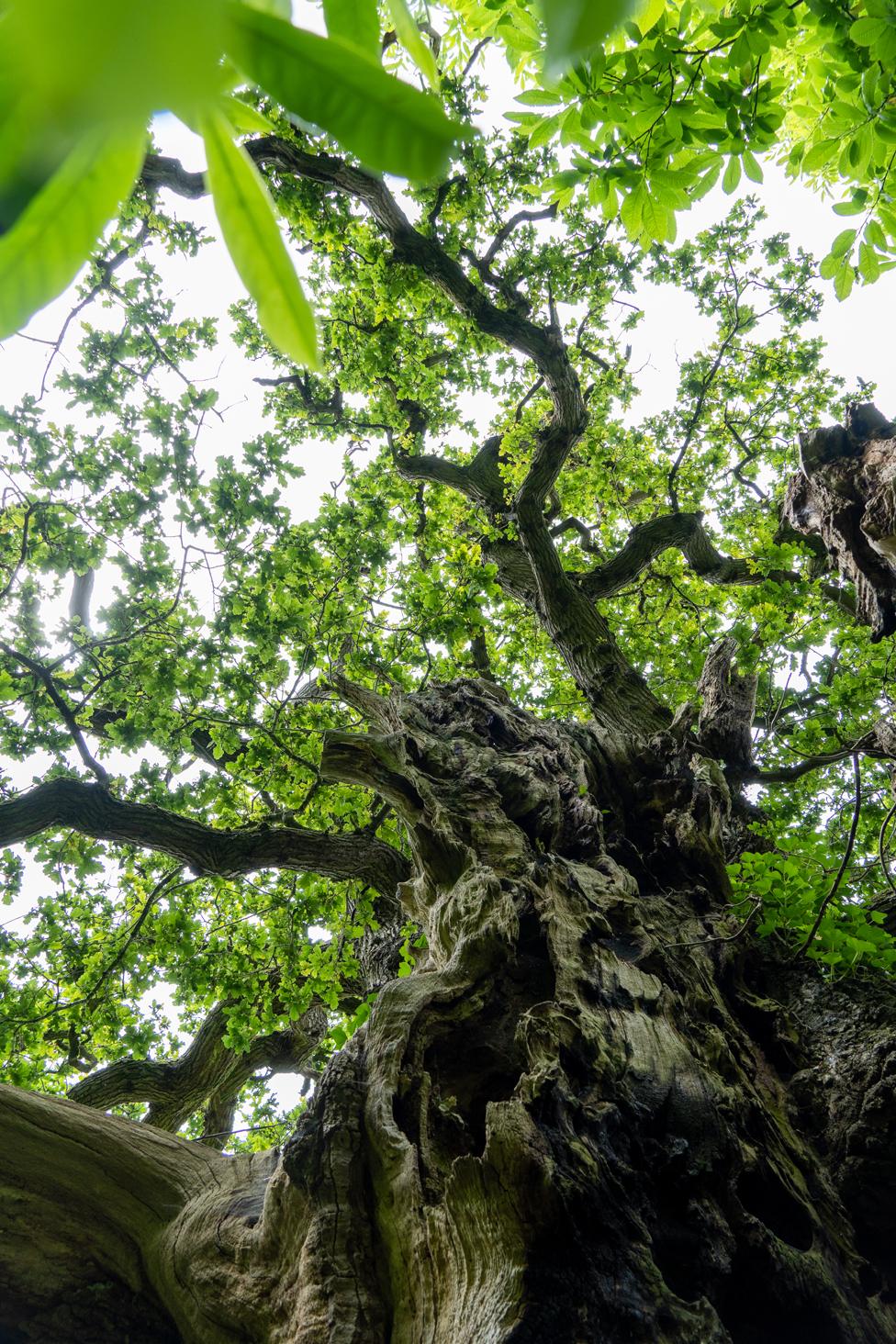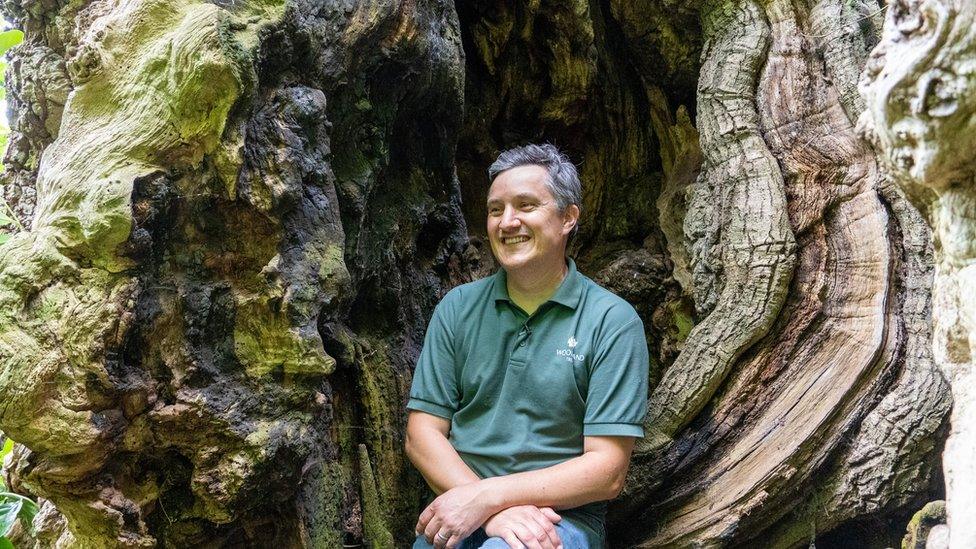New map of ancient trees an opportunity for conservation
- Published

Ancient trees can be cavernous, home to an array of wildlife

A new map shows there could be around two million trees with exceptional environmental and cultural value previously unrecorded in England.
That's ten times as many as currently on official records.
This tree-map is sounding a rare note of optimism in the conservation world.
But the Woodland Trust charity warns that these trees - known as ancient or veteran specimens - have "almost no" legal protection.
It comes after a centuries-old oak tree was felled in Peterborough on Wednesday by the council, who said it was the most likely cause of "structural damage" to nearby homes.
The BBC joined the hunt for one of these ancient giants.
On the Ashton Court Estate near Bristol, we follow Steve Marsh from the Woodland Trust, fighting our way through brambles and rhododendrons, in the hunt for the legendary Domesday Oak.

The ancient tree is large enough for us to sit inside
Instead we discover an ancient unnamed tree - one the Trust has no record of. We take turns sitting inside - the air is cool and still.
An ancient tree is considered remarkably old for its age - they are sometimes known as "living archaeology".
They're incredibly rich in wildlife - one ancient oak has more biodiversity than a thousand 100-year-old oaks.
And veteran trees have the features of an ancient specimen but are younger in age.
"It's that feeling you get when you see a really old cathedral or an old church and you think, imagine what the world was like back then," Steve says, patting the gnarled wood.

The updated, more detailed map on the right shows a much wider distribution of ancient trees
The tree is probably twice as old as St Paul's Cathedral, built in 1675, and as old as the Tower of London, he says.
Those buildings are protected, he explains, but the only reason this ancient tree has survived is because it's in a park where landowners have looked after it, he suggests
"All of our old and most amazing trees should have heritage status at least to protect them so that we can look after them and care for them in the future," he says.
It's exactly this type of hidden ancient that Dr Victoria Nolan, from the University of Nottingham, spent four years looking for.
After poring over existing records and tramping through the English countryside, it was "incredible" to establish there could be two million, she told me.
Her team used a computer model to predict where the trees were likely to be. It looked at the layout of the landscape, habitat, but also distance from cities and human populations.

Dr Victoria Nolan led the research into this new tree-map of England
"At first we couldn't believe the results. The surprising bit for me was how they can be everywhere, in places where you wouldn't think an ancient tree might be," she said.
Many are concentrated around London in the historic hunting parks and forests, as well as in the Lake District, Hereford and Northumberland.
Before their work, tree records usually showed the places where scientists had gone to look for trees, rather than where they might be.
"Now we show where they actually are in the environment," she explains.
But the results of her work are also "kind of scary".
"Our limited knowledge means those trees are not protected at all currently. Depending on where these trees are, anyone could go chop them down.
They're being damaged, especially in a lot of agricultural landscapes."
As biodiversity levels crash, these living beings are a safe haven for thousands of species.
And their respiration also helps to cool a heating climate. They also contain history and memory - they help us to dream and imagine.
Now, armed with this new map of old trees, scientists like Victoria and the rest of us could help to keep more of them alive.
The study is published in the scientific journal Ecological Applications.
Follow Claire on Twitter @BBCMarshall, external